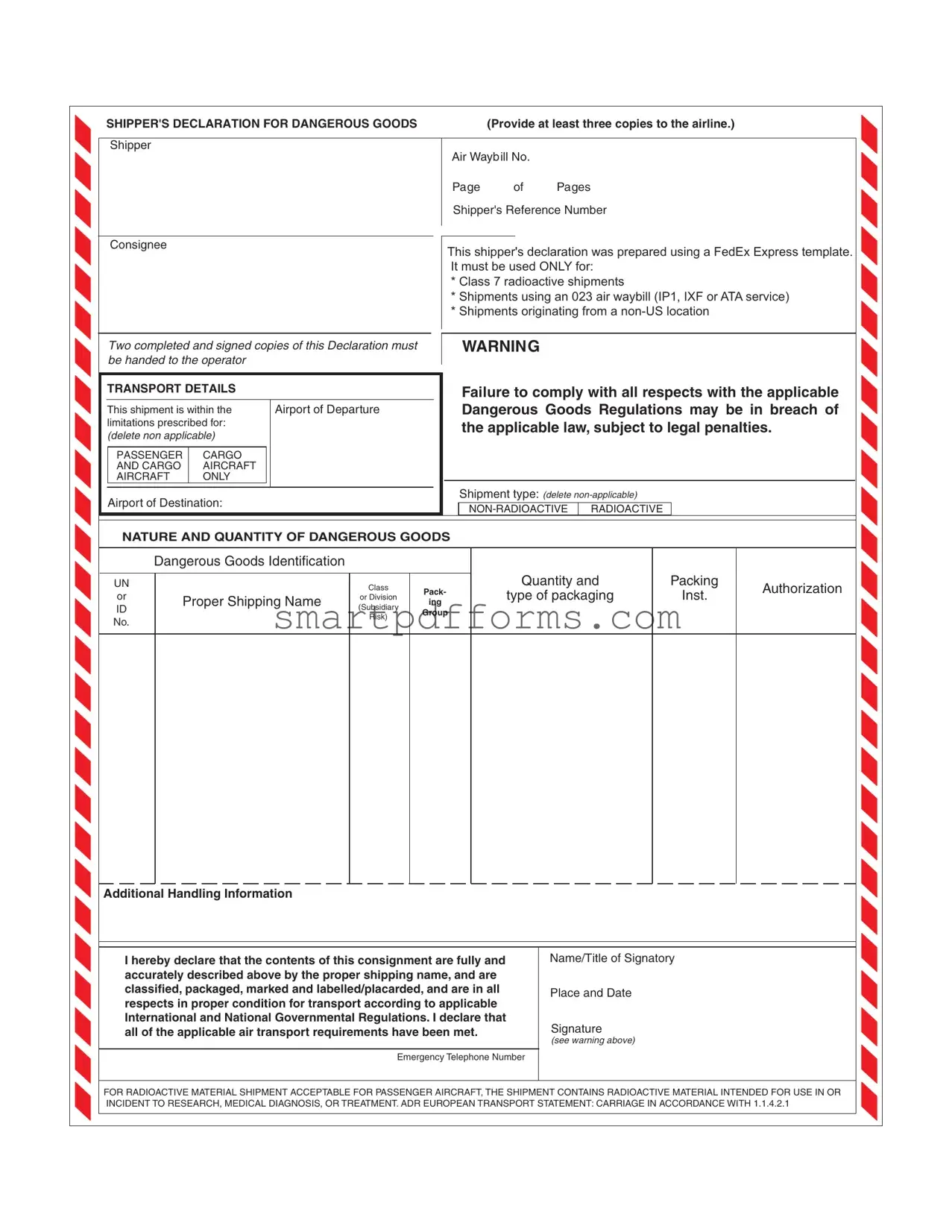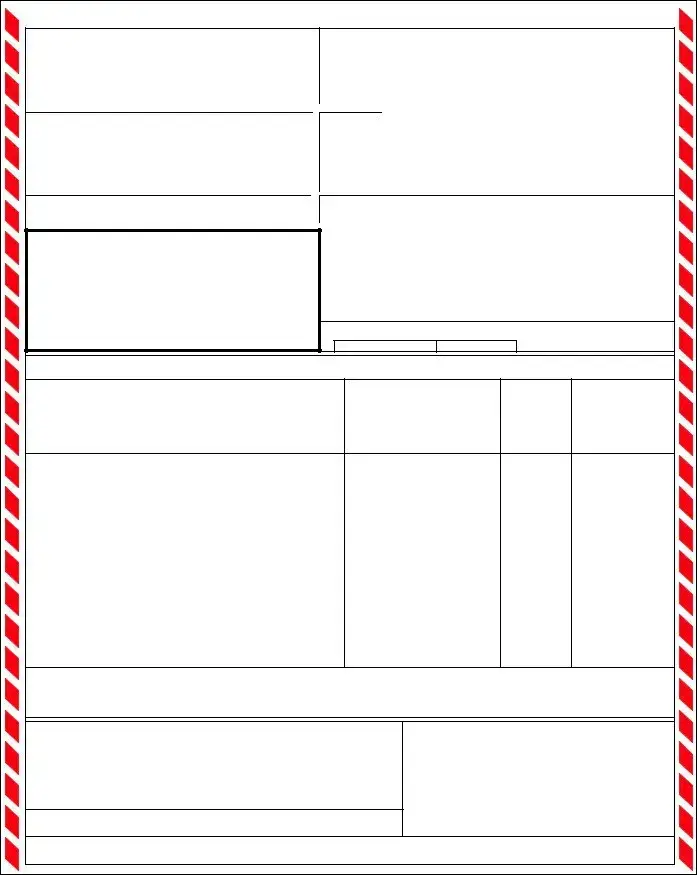Navigating the complexities of shipping dangerous goods requires meticulous attention to detail and compliance with both international and national regulations. At the heart of this process is the Shipper's Declaration for Dangerous Goods form, a crucial document that presents a myriad of specifications to ensure the safe and legal transportation of hazardous materials. Prepared typically using a FedEx Express template, this declaration is indispensable primarily for class 7 radioactive shipments, those associated with an 023 air waybill, and goods originating from non-US locations. Each shipment must be accompanied by at least two completed and signed copies of the declaration, emphasizing the sender's adherence to the stringent limitations prescribed for transportation via passenger, cargo, or cargo-only aircraft. This form details everything from the shipper and consignee information, air waybill number, to the precise nature and quantity of the dangerous goods being shipped, including proper shipping names, classification, packaging, marking, labeling, and additional handling instructions, thereby certifying that the consignment is in full compliance for transport. It underscores the stern warning that failure to comply with all applicable dangerous goods regulations could result in legal penalties, underscoring the serious responsibility shippers bear in declaring hazardous materials correctly and ensuring all air transport requirements are met.

